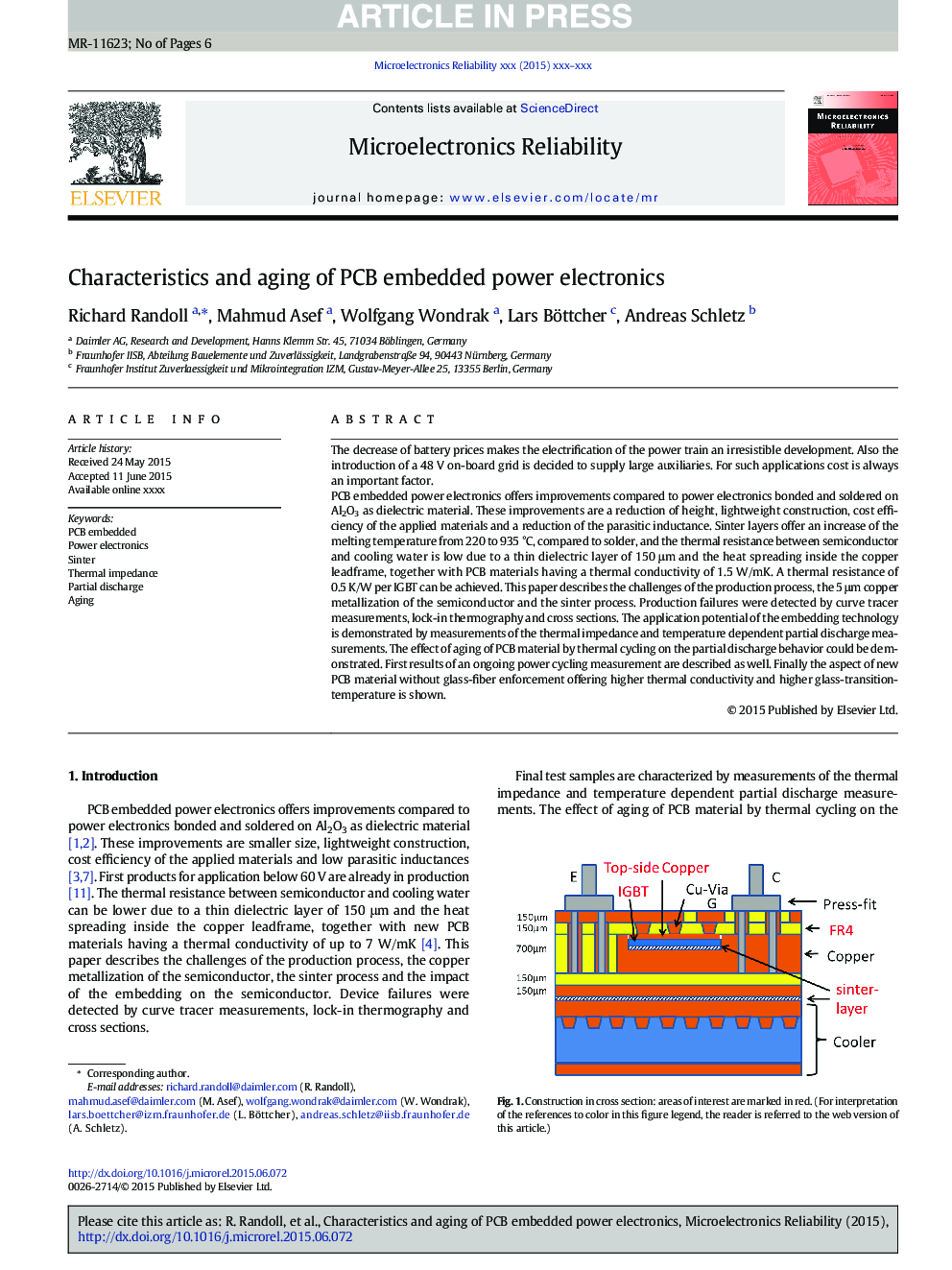| Article ID | Journal | Published Year | Pages | File Type |
|---|---|---|---|---|
| 6946688 | Microelectronics Reliability | 2015 | 6 Pages |
Abstract
PCB embedded power electronics offers improvements compared to power electronics bonded and soldered on Al2O3 as dielectric material. These improvements are a reduction of height, lightweight construction, cost efficiency of the applied materials and a reduction of the parasitic inductance. Sinter layers offer an increase of the melting temperature from 220 to 935 °C, compared to solder, and the thermal resistance between semiconductor and cooling water is low due to a thin dielectric layer of 150 μm and the heat spreading inside the copper leadframe, together with PCB materials having a thermal conductivity of 1.5 W/mK. A thermal resistance of 0.5 K/W per IGBT can be achieved. This paper describes the challenges of the production process, the 5 μm copper metallization of the semiconductor and the sinter process. Production failures were detected by curve tracer measurements, lock-in thermography and cross sections. The application potential of the embedding technology is demonstrated by measurements of the thermal impedance and temperature dependent partial discharge measurements. The effect of aging of PCB material by thermal cycling on the partial discharge behavior could be demonstrated. First results of an ongoing power cycling measurement are described as well. Finally the aspect of new PCB material without glass-fiber enforcement offering higher thermal conductivity and higher glass-transition-temperature is shown.
Related Topics
Physical Sciences and Engineering
Computer Science
Hardware and Architecture
Authors
Richard Randoll, Mahmud Asef, Wolfgang Wondrak, Lars Böttcher, Andreas Schletz,
